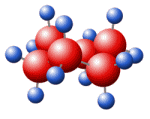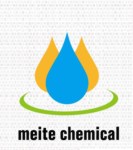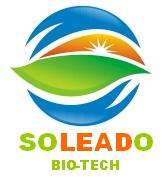|
|
|

|
Suppliers for
L-Carnosine
|
Properties | | CAS |
305-84-0 | | Formula |
C9H14N4O3 | | EINECS |
206-169-9 |

|
|
45 Registered suppliers
| Appearance | white powder
| | Smell | Characteristic
| | Assay (HPLC) | 99.0~101.0% (w/w)
| | Specific rotation | +20°~+22°
| | Melting point | 250°C~265°C
| | pH(in 2% water) | 7.9~8.5
| | Heavy metals | NMT 10ppm
| | Arsenic | NMT 1ppm
| | L-histidine(TLC) | NMT 1.0%
| | ß-alanine(TLC) | NMT 0.1% |
Appearance:white powder | Smell:Characteristic | Assay (HPLC):99.0~101.0% (w/w) | Specific rotation:+20°~+22° | Melting point:250°C~265°C | Arsenic:NMT 1ppm | Heavy metals:NMT 10ppm | pH(in 2% water):7.9~8.5 | L-histidine(TLC):NMT 1.0% | ß-alanine(TLC):NMT 0.1%
Package:1kg 25kg
Delivery time:within 2days after get payment.
Appearance:white powder | Smell:Characteristic | Assay (HPLC):99.0~101.0% (w/w) | Specific rotation:+20°~+22° | Melting point:250°C~265°C | Arsenic:NMT 1ppm | Heavy metals:NMT 10ppm | pH(in 2% water):7.9~8.5 | L-histidine(TLC):NMT 1.0% | ß-alanine(TLC):NMT 0.1%
Package:1kg 25kg
Delivery time:within 2days after get payment.
Appearance:white powder | Smell:Characteristic | Assay (HPLC):99.0~101.0% (w/w) | Specific rotation:+20°~+22° | Melting point:250°C~265°C | Arsenic:NMT 1ppm | Heavy metals:NMT 10ppm | pH(in 2% water):7.9~8.5 | L-histidine(TLC):NMT 1.0% | ß-alanine(TLC):NMT 0.1%
Package:1kg 25kg
Delivery time:within 2days after get payment.
Molecular Formula: C9H14N4O3
Molecular Weight: 226.23
Hazard Symbols: Xn
WGKGermany: 2
HS Code: 29332900
Molecular Formula: C9H14N4O3
Molecular Weight: 226.23
Hazard Symbols: Xn
WGKGermany: 2
HS Code: 29332900
Molecular Formula: C9H14N4O3
Molecular Weight: 226.23
Hazard Symbols: Xn
WGKGermany: 2
HS Code: 29332900
for cosmetic / cosmetic grade
for cosmetic / cosmetic grade
for cosmetic / cosmetic grade
for cosmetic / cosmetic grade
EINECS :206-169-9
Molecular formula :C9H14N4O3
EINECS :206-169-9
Molecular formula :C9H14N4O3
EINECS :206-169-9
Molecular formula :C9H14N4O3
EINECS :206-169-9
Molecular formula :C9H14N4O3
| Other Names | N-B-ALANYL-L-HISTIDINE
| | MF | C9H14N4O3, C9H14N4O3
| | EINECS No. | 206-169-9
| | Place of Origin | Shandong, China
| | Type | Organic Chemistry
| | Purity | 99%
| | Brand Name | Unilong |
| Other Names | N-B-ALANYL-L-HISTIDINE
| | MF | C9H14N4O3, C9H14N4O3
| | EINECS No. | 206-169-9
| | Place of Origin | Shandong, China
| | Type | Organic Chemistry
| | Purity | 99%
| | Brand Name | Unilong |
| Other Names | N-B-ALANYL-L-HISTIDINE
| | MF | C9H14N4O3, C9H14N4O3
| | EINECS No. | 206-169-9
| | Place of Origin | Shandong, China
| | Type | Organic Chemistry
| | Purity | 99%
| | Brand Name | Unilong |
| Other Names | N-B-ALANYL-L-HISTIDINE
| | MF | C9H14N4O3, C9H14N4O3
| | EINECS No. | 206-169-9
| | Place of Origin | Shandong, China
| | Type | Organic Chemistry
| | Purity | 99%
| | Brand Name | Unilong |
| Other Names | N-B-ALANYL-L-HISTIDINE
| | MF | C9H14N4O3, C9H14N4O3
| | EINECS No. | 206-169-9
| | Place of Origin | Shandong, China
| | Type | Organic Chemistry
| | Purity | 99%
| | Brand Name | Unilong |
| Other Names | N-B-ALANYL-L-HISTIDINE
| | MF | C9H14N4O3, C9H14N4O3
| | EINECS No. | 206-169-9
| | Place of Origin | Shandong, China
| | Type | Organic Chemistry
| | Purity | 99%
| | Brand Name | Unilong |
| Other Names | N-B-ALANYL-L-HISTIDINE
| | MF | C9H14N4O3, C9H14N4O3
| | EINECS No. | 206-169-9
| | Place of Origin | Shandong, China
| | Type | Organic Chemistry
| | Purity | 99%
| | Brand Name | Unilong |
| Other Names | N-B-ALANYL-L-HISTIDINE
| | MF | C9H14N4O3, C9H14N4O3
| | EINECS No. | 206-169-9
| | Place of Origin | Shandong, China
| | Type | Organic Chemistry
| | Purity | 99%
| | Brand Name | Unilong |
| Other Names | N-B-ALANYL-L-HISTIDINE
| | MF | C9H14N4O3, C9H14N4O3
| | EINECS No. | 206-169-9
| | Place of Origin | Shandong, China
| | Type | Organic Chemistry
| | Purity | 99%
| | Brand Name | Unilong |
| Other Names | N-B-ALANYL-L-HISTIDINE
| | MF | C9H14N4O3, C9H14N4O3
| | EINECS No. | 206-169-9
| | Place of Origin | Shandong, China
| | Type | Organic Chemistry
| | Purity | 99%
| | Brand Name | Unilong |
| Other Names | N-B-ALANYL-L-HISTIDINE
| | MF | C9H14N4O3, C9H14N4O3
| | EINECS No. | 206-169-9
| | Place of Origin | Shandong, China
| | Type | Organic Chemistry
| | Purity | 99%
| | Brand Name | Unilong |
More details are to be found here
More details are to be found here
More details are to be found here
Description : L-Carnosine is a dipeptide concentrated in muscle and brain tissue. It acts as an antioxidant that scavenges reactive oxygen species (ROS) and transition metal ions. It is also a neurotransmitter in the brain. - Molecular Weight :226.24
- Boiling Point :656.2ºC at 760 mmHg
- Melting Point :250-265 ºC
- Purity :≥ 99%
Molecular Formula : C9H14N4O3 Canonical SMILES : C1=C(NC=N1)CC(C(=O)O)NC(=O)CCN InChI : InChI=1S/C9H14N4O3/c10-2-1-8(14)13-7(9(15)16)3-6-4-11-5-12-6/h4-5,7H,1-3,10H2,(H,11,12)(H,13,14)(H,15,16)/t7-/m0/s1
InChIKey :
CQOVPNPJLQNMDC-ZETCQYMHSA-N
Solubility :
Soluble in Water
Appearance :
White to off-white powder
Storage : Store at-20 °C
Synonyms :
Carnosine; beta-Alanyl-L-histidine; Karnozin
More details are to be found here
Description : L-Carnosine is a dipeptide concentrated in muscle and brain tissue. It acts as an antioxidant that scavenges reactive oxygen species (ROS) and transition metal ions. It is also a neurotransmitter in the brain. - Molecular Weight :226.24
- Boiling Point :656.2ºC at 760 mmHg
- Melting Point :250-265 ºC
- Purity :≥ 99%
Molecular Formula : C9H14N4O3 Canonical SMILES : C1=C(NC=N1)CC(C(=O)O)NC(=O)CCN InChI : InChI=1S/C9H14N4O3/c10-2-1-8(14)13-7(9(15)16)3-6-4-11-5-12-6/h4-5,7H,1-3,10H2,(H,11,12)(H,13,14)(H,15,16)/t7-/m0/s1
InChIKey :
CQOVPNPJLQNMDC-ZETCQYMHSA-N
Solubility :
Soluble in Water
Appearance :
White to off-white powder
Storage : Store at-20 °C
Synonyms :
Carnosine; beta-Alanyl-L-histidine; Karnozin
More details are to be found here
Description : L-Carnosine is a dipeptide concentrated in muscle and brain tissue. It acts as an antioxidant that scavenges reactive oxygen species (ROS) and transition metal ions. It is also a neurotransmitter in the brain. - Molecular Weight :226.24
- Boiling Point :656.2ºC at 760 mmHg
- Melting Point :250-265 ºC
- Purity :≥ 99%
Molecular Formula : C9H14N4O3 Canonical SMILES : C1=C(NC=N1)CC(C(=O)O)NC(=O)CCN InChI : InChI=1S/C9H14N4O3/c10-2-1-8(14)13-7(9(15)16)3-6-4-11-5-12-6/h4-5,7H,1-3,10H2,(H,11,12)(H,13,14)(H,15,16)/t7-/m0/s1
InChIKey :
CQOVPNPJLQNMDC-ZETCQYMHSA-N
Solubility :
Soluble in Water
Appearance :
White to off-white powder
Storage : Store at-20 °C
Synonyms :
Carnosine; beta-Alanyl-L-histidine; Karnozin
More details are to be found here
Description : L-Carnosine is a dipeptide concentrated in muscle and brain tissue. It acts as an antioxidant that scavenges reactive oxygen species (ROS) and transition metal ions. It is also a neurotransmitter in the brain. - Molecular Weight :226.24
- Boiling Point :656.2ºC at 760 mmHg
- Melting Point :250-265 ºC
- Purity :≥ 99%
Molecular Formula : C9H14N4O3 Canonical SMILES : C1=C(NC=N1)CC(C(=O)O)NC(=O)CCN InChI : InChI=1S/C9H14N4O3/c10-2-1-8(14)13-7(9(15)16)3-6-4-11-5-12-6/h4-5,7H,1-3,10H2,(H,11,12)(H,13,14)(H,15,16)/t7-/m0/s1
InChIKey :
CQOVPNPJLQNMDC-ZETCQYMHSA-N
Solubility :
Soluble in Water
Appearance :
White to off-white powder
Storage : Store at-20 °C
Synonyms :
Carnosine; beta-Alanyl-L-histidine; Karnozin
More details are to be found here
Description : L-Carnosine is a dipeptide concentrated in muscle and brain tissue. It acts as an antioxidant that scavenges reactive oxygen species (ROS) and transition metal ions. It is also a neurotransmitter in the brain. - Molecular Weight :226.24
- Boiling Point :656.2ºC at 760 mmHg
- Melting Point :250-265 ºC
- Purity :≥ 99%
Molecular Formula : C9H14N4O3 Canonical SMILES : C1=C(NC=N1)CC(C(=O)O)NC(=O)CCN InChI : InChI=1S/C9H14N4O3/c10-2-1-8(14)13-7(9(15)16)3-6-4-11-5-12-6/h4-5,7H,1-3,10H2,(H,11,12)(H,13,14)(H,15,16)/t7-/m0/s1
InChIKey :
CQOVPNPJLQNMDC-ZETCQYMHSA-N
Solubility :
Soluble in Water
Appearance :
White to off-white powder
Storage : Store at-20 °C
Synonyms :
Carnosine; beta-Alanyl-L-histidine; Karnozin
More details are to be found here
Description : L-Carnosine is a dipeptide concentrated in muscle and brain tissue. It acts as an antioxidant that scavenges reactive oxygen species (ROS) and transition metal ions. It is also a neurotransmitter in the brain. - Molecular Weight :226.24
- Boiling Point :656.2ºC at 760 mmHg
- Melting Point :250-265 ºC
- Purity :≥ 99%
Molecular Formula : C9H14N4O3 Canonical SMILES : C1=C(NC=N1)CC(C(=O)O)NC(=O)CCN InChI : InChI=1S/C9H14N4O3/c10-2-1-8(14)13-7(9(15)16)3-6-4-11-5-12-6/h4-5,7H,1-3,10H2,(H,11,12)(H,13,14)(H,15,16)/t7-/m0/s1
InChIKey :
CQOVPNPJLQNMDC-ZETCQYMHSA-N
Solubility :
Soluble in Water
Appearance :
White to off-white powder
Storage : Store at-20 °C
Synonyms :
Carnosine; beta-Alanyl-L-histidine; Karnozin
More details are to be found here
Description : L-Carnosine is a dipeptide concentrated in muscle and brain tissue. It acts as an antioxidant that scavenges reactive oxygen species (ROS) and transition metal ions. It is also a neurotransmitter in the brain. - Molecular Weight :226.24
- Boiling Point :656.2ºC at 760 mmHg
- Melting Point :250-265 ºC
- Purity :≥ 99%
Molecular Formula : C9H14N4O3 Canonical SMILES : C1=C(NC=N1)CC(C(=O)O)NC(=O)CCN InChI : InChI=1S/C9H14N4O3/c10-2-1-8(14)13-7(9(15)16)3-6-4-11-5-12-6/h4-5,7H,1-3,10H2,(H,11,12)(H,13,14)(H,15,16)/t7-/m0/s1
InChIKey :
CQOVPNPJLQNMDC-ZETCQYMHSA-N
Solubility :
Soluble in Water
Appearance :
White to off-white powder
Storage : Store at-20 °C
Synonyms :
Carnosine; beta-Alanyl-L-histidine; Karnozin
More details are to be found here
Scope of application
1. New food additives.
2. Carnosine is a dipeptide composed of β-alanine and histidine, which can be synthesized in animals.
3. Carnosine has a significant inhibitory effect on lipid oxidation caused by free radicals and metal ions. Carnosine can inhibit fat oxidation and protect meat color during meat processing.
4. The use in cosmetics can prevent skin aging and skin whitening. Carnosine can prevent free radicals generated by smoking, and this free radical can damage the skin more than sunlight. Free radicals are the human body. Very active atoms or groups of atoms can oxidize other substances in the human body.
5. Carnosine has antioxidant properties and is a natural antioxidant.
6. The light transmittance of the turbid human eye lens is enhanced. Antioxidant preparations using carnosine as raw materials can treat senile cataracts.
7. The sensory substance of the olfactory nerve can promote wound healing. It is especially used as an oral medicine for surgical treatment.
The role of carnosine
1. International studies have confirmed that carnosine has a good anti-glycation effect. Carbonylated proteins and advanced glycation products (AGEs) are signals of cell senescence. They accumulate abnormally in cells, accelerating cross-linking with other proteins. Carnosine can replace the reaction of protein with sugar in the body through the form of reaction with sugar before sugar erodes the skin, thereby helping to protect protein from glycosylation and achieve the effect of anti-glycation.
2. There is an aging-related phenomenon called non-enzymatic glycosylation of proteins. The most preferentially glycosylated site is the amino group and carbonyl group close to the imidazole, and carnosine happens to possess these groups, so the addition of carnosine leads to It has the highest priority to be reacted and replaces the protein by glycosylation in advance.
3. Carnosine is also an important intracellular antioxidant. Studies have shown that carnosine can scaveng e reactive oxygen species (ROS) and prevent the peroxidation of cell membrane fatty acids during oxidative stress. At the same time, it also has a strong anti-aging effect.
Antioxidant application
1. Carnosine is not only non-toxic, but also has strong antioxidant properties, so it has attracted widespread attention as a new type of food additive and medicinal agent. Carnosine participates in the peroxidation reaction in the cell. In addition to inhibiting the peroxidation process of the cell membrane, it can also inhibit the related peroxidation reaction in the cell.
2. As a cosmetic, carnosine has antioxidant properties and is a natural antioxidant that can remove reactive oxygen free radicals (ROS) and α-β unsaturated aldehydes formed by excessive oxidation of fatty acids in cell membranes during oxidative stress.
3. The use in cosmetics can prevent skin aging and skin whitening. Carnosine can prevent the appearance of absorption or atomic groups, which can oxidize other substances in the human body.
Scope of application
1. New food additives.
2. Carnosine is a dipeptide composed of β-alanine and histidine, which can be synthesized in animals.
3. Carnosine has a significant inhibitory effect on lipid oxidation caused by free radicals and metal ions. Carnosine can inhibit fat oxidation and protect meat color during meat processing.
4. The use in cosmetics can prevent skin aging and skin whitening. Carnosine can prevent free radicals generated by smoking, and this free radical can damage the skin more than sunlight. Free radicals are the human body. Very active atoms or groups of atoms can oxidize other substances in the human body.
5. Carnosine has antioxidant properties and is a natural antioxidant.
6. The light transmittance of the turbid human eye lens is enhanced. Antioxidant preparations using carnosine as raw materials can treat senile cataracts.
7. The sensory substance of the olfactory nerve can promote wound healing. It is especially used as an oral medicine for surgical treatment.
The role of carnosine
1. International studies have confirmed that carnosine has a good anti-glycation effect. Carbonylated proteins and advanced glycation products (AGEs) are signals of cell senescence. They accumulate abnormally in cells, accelerating cross-linking with other proteins. Carnosine can replace the reaction of protein with sugar in the body through the form of reaction with sugar before sugar erodes the skin, thereby helping to protect protein from glycosylation and achieve the effect of anti-glycation.
2. There is an aging-related phenomenon called non-enzymatic glycosylation of proteins. The most preferentially glycosylated site is the amino group and carbonyl group close to the imidazole, and carnosine happens to possess these groups, so the addition of carnosine leads to It has the highest priority to be reacted and replaces the protein by glycosylation in advance.
3. Carnosine is also an important intracellular antioxidant. Studies have shown that carnosine can scaveng e reactive oxygen species (ROS) and prevent the peroxidation of cell membrane fatty acids during oxidative stress. At the same time, it also has a strong anti-aging effect.
Antioxidant application
1. Carnosine is not only non-toxic, but also has strong antioxidant properties, so it has attracted widespread attention as a new type of food additive and medicinal agent. Carnosine participates in the peroxidation reaction in the cell. In addition to inhibiting the peroxidation process of the cell membrane, it can also inhibit the related peroxidation reaction in the cell.
2. As a cosmetic, carnosine has antioxidant properties and is a natural antioxidant that can remove reactive oxygen free radicals (ROS) and α-β unsaturated aldehydes formed by excessive oxidation of fatty acids in cell membranes during oxidative stress.
3. The use in cosmetics can prevent skin aging and skin whitening. Carnosine can prevent the appearance of absorption or atomic groups, which can oxidize other substances in the human body.
Scope of application
1. New food additives.
2. Carnosine is a dipeptide composed of β-alanine and histidine, which can be synthesized in animals.
3. Carnosine has a significant inhibitory effect on lipid oxidation caused by free radicals and metal ions. Carnosine can inhibit fat oxidation and protect meat color during meat processing.
4. The use in cosmetics can prevent skin aging and skin whitening. Carnosine can prevent free radicals generated by smoking, and this free radical can damage the skin more than sunlight. Free radicals are the human body. Very active atoms or groups of atoms can oxidize other substances in the human body.
5. Carnosine has antioxidant properties and is a natural antioxidant.
6. The light transmittance of the turbid human eye lens is enhanced. Antioxidant preparations using carnosine as raw materials can treat senile cataracts.
7. The sensory substance of the olfactory nerve can promote wound healing. It is especially used as an oral medicine for surgical treatment.
The role of carnosine
1. International studies have confirmed that carnosine has a good anti-glycation effect. Carbonylated proteins and advanced glycation products (AGEs) are signals of cell senescence. They accumulate abnormally in cells, accelerating cross-linking with other proteins. Carnosine can replace the reaction of protein with sugar in the body through the form of reaction with sugar before sugar erodes the skin, thereby helping to protect protein from glycosylation and achieve the effect of anti-glycation.
2. There is an aging-related phenomenon called non-enzymatic glycosylation of proteins. The most preferentially glycosylated site is the amino group and carbonyl group close to the imidazole, and carnosine happens to possess these groups, so the addition of carnosine leads to It has the highest priority to be reacted and replaces the protein by glycosylation in advance.
3. Carnosine is also an important intracellular antioxidant. Studies have shown that carnosine can scaveng e reactive oxygen species (ROS) and prevent the peroxidation of cell membrane fatty acids during oxidative stress. At the same time, it also has a strong anti-aging effect.
Antioxidant application
1. Carnosine is not only non-toxic, but also has strong antioxidant properties, so it has attracted widespread attention as a new type of food additive and medicinal agent. Carnosine participates in the peroxidation reaction in the cell. In addition to inhibiting the peroxidation process of the cell membrane, it can also inhibit the related peroxidation reaction in the cell.
2. As a cosmetic, carnosine has antioxidant properties and is a natural antioxidant that can remove reactive oxygen free radicals (ROS) and α-β unsaturated aldehydes formed by excessive oxidation of fatty acids in cell membranes during oxidative stress.
3. The use in cosmetics can prevent skin aging and skin whitening. Carnosine can prevent the appearance of absorption or atomic groups, which can oxidize other substances in the human body.
Scope of application
1. New food additives.
2. Carnosine is a dipeptide composed of β-alanine and histidine, which can be synthesized in animals.
3. Carnosine has a significant inhibitory effect on lipid oxidation caused by free radicals and metal ions. Carnosine can inhibit fat oxidation and protect meat color during meat processing.
4. The use in cosmetics can prevent skin aging and skin whitening. Carnosine can prevent free radicals generated by smoking, and this free radical can damage the skin more than sunlight. Free radicals are the human body. Very active atoms or groups of atoms can oxidize other substances in the human body.
5. Carnosine has antioxidant properties and is a natural antioxidant.
6. The light transmittance of the turbid human eye lens is enhanced. Antioxidant preparations using carnosine as raw materials can treat senile cataracts.
7. The sensory substance of the olfactory nerve can promote wound healing. It is especially used as an oral medicine for surgical treatment.
The role of carnosine
1. International studies have confirmed that carnosine has a good anti-glycation effect. Carbonylated proteins and advanced glycation products (AGEs) are signals of cell senescence. They accumulate abnormally in cells, accelerating cross-linking with other proteins. Carnosine can replace the reaction of protein with sugar in the body through the form of reaction with sugar before sugar erodes the skin, thereby helping to protect protein from glycosylation and achieve the effect of anti-glycation.
2. There is an aging-related phenomenon called non-enzymatic glycosylation of proteins. The most preferentially glycosylated site is the amino group and carbonyl group close to the imidazole, and carnosine happens to possess these groups, so the addition of carnosine leads to It has the highest priority to be reacted and replaces the protein by glycosylation in advance.
3. Carnosine is also an important intracellular antioxidant. Studies have shown that carnosine can scaveng e reactive oxygen species (ROS) and prevent the peroxidation of cell membrane fatty acids during oxidative stress. At the same time, it also has a strong anti-aging effect.
Antioxidant application
1. Carnosine is not only non-toxic, but also has strong antioxidant properties, so it has attracted widespread attention as a new type of food additive and medicinal agent. Carnosine participates in the peroxidation reaction in the cell. In addition to inhibiting the peroxidation process of the cell membrane, it can also inhibit the related peroxidation reaction in the cell.
2. As a cosmetic, carnosine has antioxidant properties and is a natural antioxidant that can remove reactive oxygen free radicals (ROS) and α-β unsaturated aldehydes formed by excessive oxidation of fatty acids in cell membranes during oxidative stress.
3. The use in cosmetics can prevent skin aging and skin whitening. Carnosine can prevent the appearance of absorption or atomic groups, which can oxidize other substances in the human body.
Scope of application
1. New food additives.
2. Carnosine is a dipeptide composed of β-alanine and histidine, which can be synthesized in animals.
3. Carnosine has a significant inhibitory effect on lipid oxidation caused by free radicals and metal ions. Carnosine can inhibit fat oxidation and protect meat color during meat processing.
4. The use in cosmetics can prevent skin aging and skin whitening. Carnosine can prevent free radicals generated by smoking, and this free radical can damage the skin more than sunlight. Free radicals are the human body. Very active atoms or groups of atoms can oxidize other substances in the human body.
5. Carnosine has antioxidant properties and is a natural antioxidant.
6. The light transmittance of the turbid human eye lens is enhanced. Antioxidant preparations using carnosine as raw materials can treat senile cataracts.
7. The sensory substance of the olfactory nerve can promote wound healing. It is especially used as an oral medicine for surgical treatment.
The role of carnosine
1. International studies have confirmed that carnosine has a good anti-glycation effect. Carbonylated proteins and advanced glycation products (AGEs) are signals of cell senescence. They accumulate abnormally in cells, accelerating cross-linking with other proteins. Carnosine can replace the reaction of protein with sugar in the body through the form of reaction with sugar before sugar erodes the skin, thereby helping to protect protein from glycosylation and achieve the effect of anti-glycation.
2. There is an aging-related phenomenon called non-enzymatic glycosylation of proteins. The most preferentially glycosylated site is the amino group and carbonyl group close to the imidazole, and carnosine happens to possess these groups, so the addition of carnosine leads to It has the highest priority to be reacted and replaces the protein by glycosylation in advance.
3. Carnosine is also an important intracellular antioxidant. Studies have shown that carnosine can scaveng e reactive oxygen species (ROS) and prevent the peroxidation of cell membrane fatty acids during oxidative stress. At the same time, it also has a strong anti-aging effect.
Antioxidant application
1. Carnosine is not only non-toxic, but also has strong antioxidant properties, so it has attracted widespread attention as a new type of food additive and medicinal agent. Carnosine participates in the peroxidation reaction in the cell. In addition to inhibiting the peroxidation process of the cell membrane, it can also inhibit the related peroxidation reaction in the cell.
2. As a cosmetic, carnosine has antioxidant properties and is a natural antioxidant that can remove reactive oxygen free radicals (ROS) and α-β unsaturated aldehydes formed by excessive oxidation of fatty acids in cell membranes during oxidative stress.
3. The use in cosmetics can prevent skin aging and skin whitening. Carnosine can prevent the appearance of absorption or atomic groups, which can oxidize other substances in the human body.
Scope of application
1. New food additives.
2. Carnosine is a dipeptide composed of β-alanine and histidine, which can be synthesized in animals.
3. Carnosine has a significant inhibitory effect on lipid oxidation caused by free radicals and metal ions. Carnosine can inhibit fat oxidation and protect meat color during meat processing.
4. The use in cosmetics can prevent skin aging and skin whitening. Carnosine can prevent free radicals generated by smoking, and this free radical can damage the skin more than sunlight. Free radicals are the human body. Very active atoms or groups of atoms can oxidize other substances in the human body.
5. Carnosine has antioxidant properties and is a natural antioxidant.
6. The light transmittance of the turbid human eye lens is enhanced. Antioxidant preparations using carnosine as raw materials can treat senile cataracts.
7. The sensory substance of the olfactory nerve can promote wound healing. It is especially used as an oral medicine for surgical treatment.
The role of carnosine
1. International studies have confirmed that carnosine has a good anti-glycation effect. Carbonylated proteins and advanced glycation products (AGEs) are signals of cell senescence. They accumulate abnormally in cells, accelerating cross-linking with other proteins. Carnosine can replace the reaction of protein with sugar in the body through the form of reaction with sugar before sugar erodes the skin, thereby helping to protect protein from glycosylation and achieve the effect of anti-glycation.
2. There is an aging-related phenomenon called non-enzymatic glycosylation of proteins. The most preferentially glycosylated site is the amino group and carbonyl group close to the imidazole, and carnosine happens to possess these groups, so the addition of carnosine leads to It has the highest priority to be reacted and replaces the protein by glycosylation in advance.
3. Carnosine is also an important intracellular antioxidant. Studies have shown that carnosine can scaveng e reactive oxygen species (ROS) and prevent the peroxidation of cell membrane fatty acids during oxidative stress. At the same time, it also has a strong anti-aging effect.
Antioxidant application
1. Carnosine is not only non-toxic, but also has strong antioxidant properties, so it has attracted widespread attention as a new type of food additive and medicinal agent. Carnosine participates in the peroxidation reaction in the cell. In addition to inhibiting the peroxidation process of the cell membrane, it can also inhibit the related peroxidation reaction in the cell.
2. As a cosmetic, carnosine has antioxidant properties and is a natural antioxidant that can remove reactive oxygen free radicals (ROS) and α-β unsaturated aldehydes formed by excessive oxidation of fatty acids in cell membranes during oxidative stress.
3. The use in cosmetics can prevent skin aging and skin whitening. Carnosine can prevent the appearance of absorption or atomic groups, which can oxidize other substances in the human body.
|
Properties:
... more properties and specification on L-Carnosine
|
|
Privileged suppliers
Last update 2024-04-25
|



 details
details details
details details
details

_Co_Ltd_1_575.jpg)






